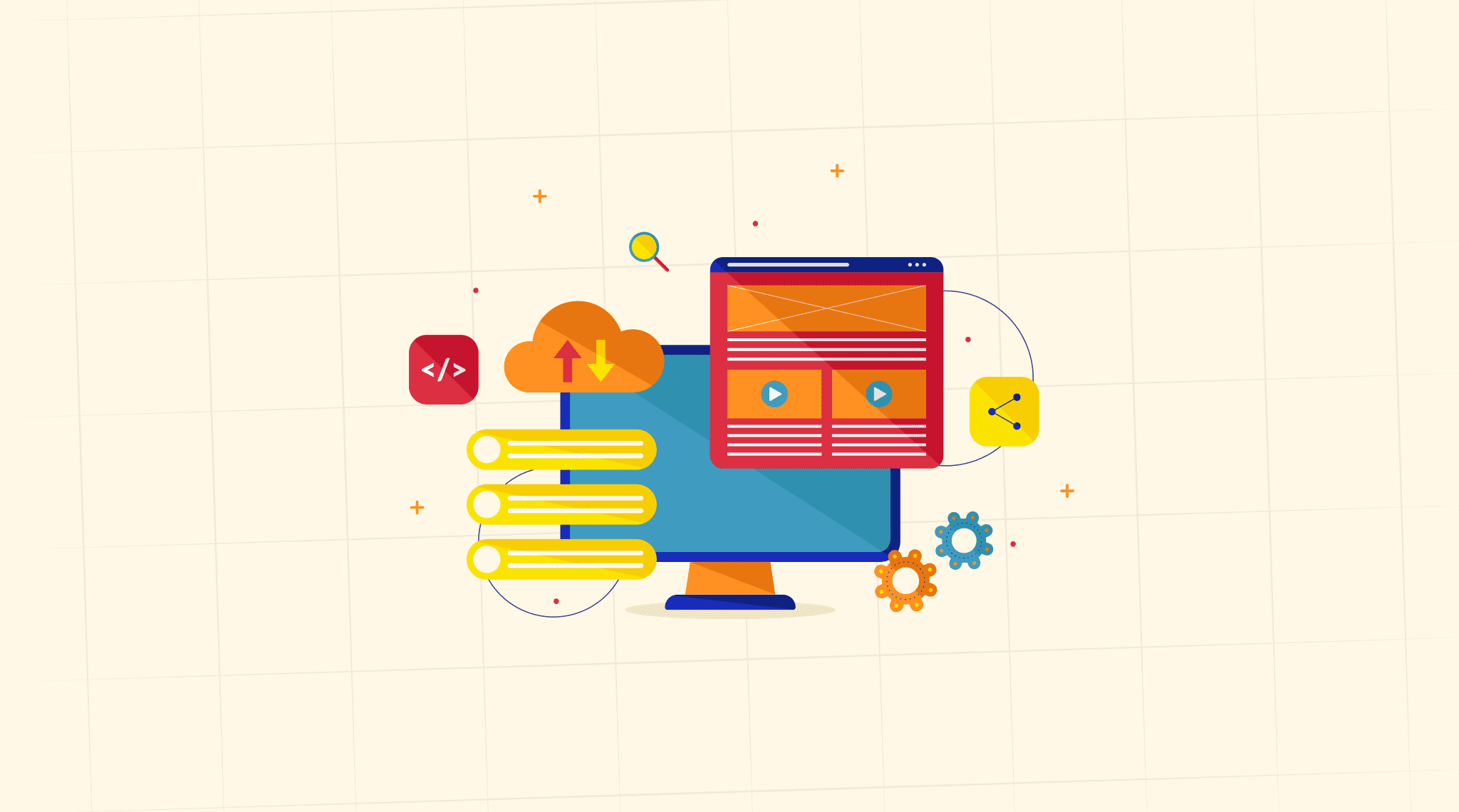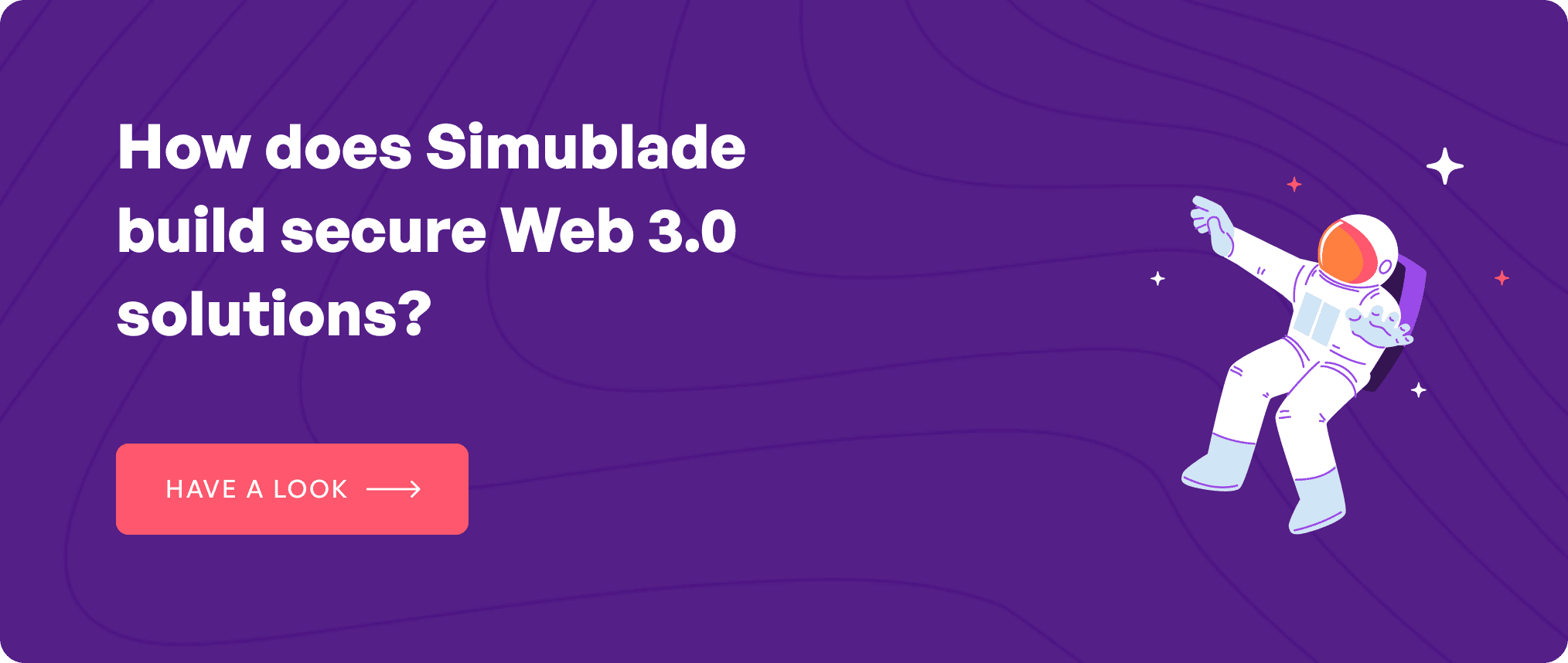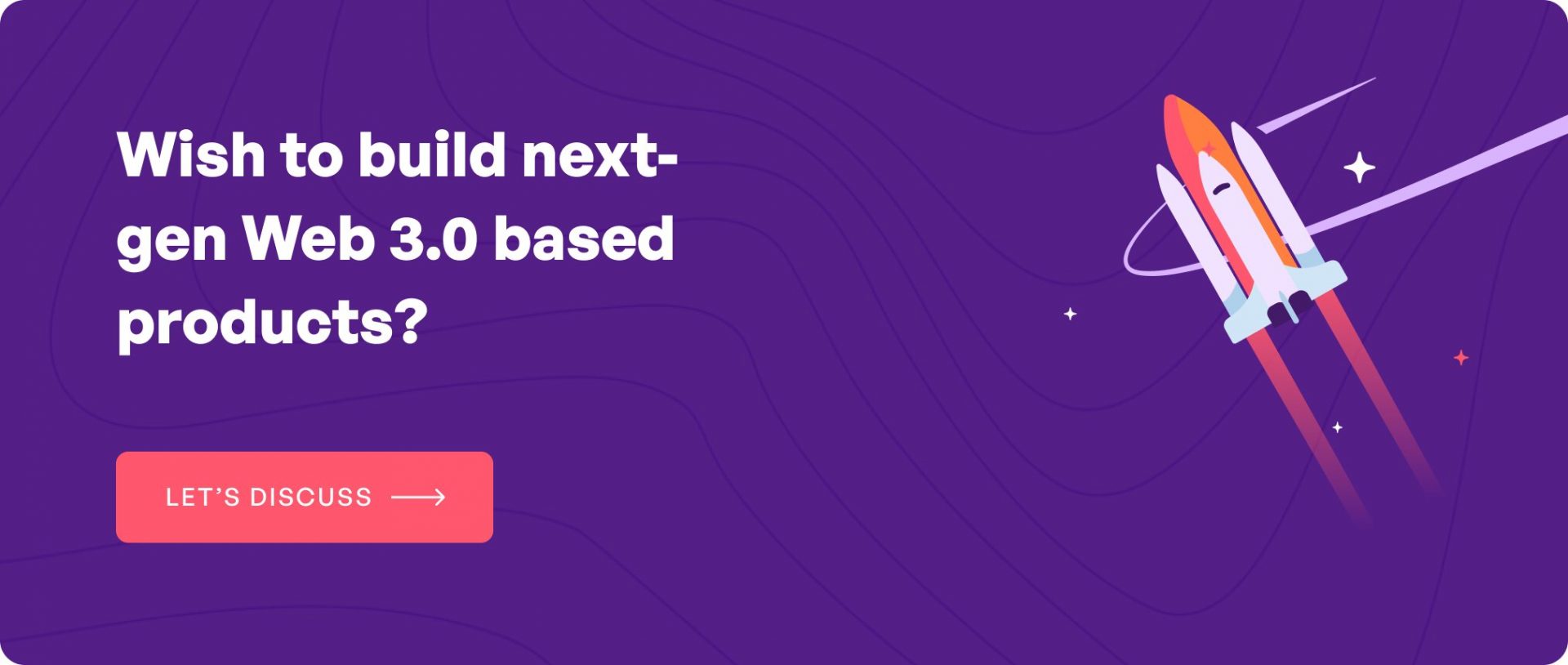The internet has entered a new yet pioneering digital era with the coming of Web 3.0. Currently designed to focus on decentralization, advanced tech-stack, and futuristic user experiences, the technology is in a hyper-active work-in-progress mode, aggressively evolving and finding its footing. This growth spectrum is made possible since Web 3.0 is heavily dependent on AI and displays advanced characteristics like intelligence, three dimensionality, democratic information usage, and standardized pages to homogenize functionalities.
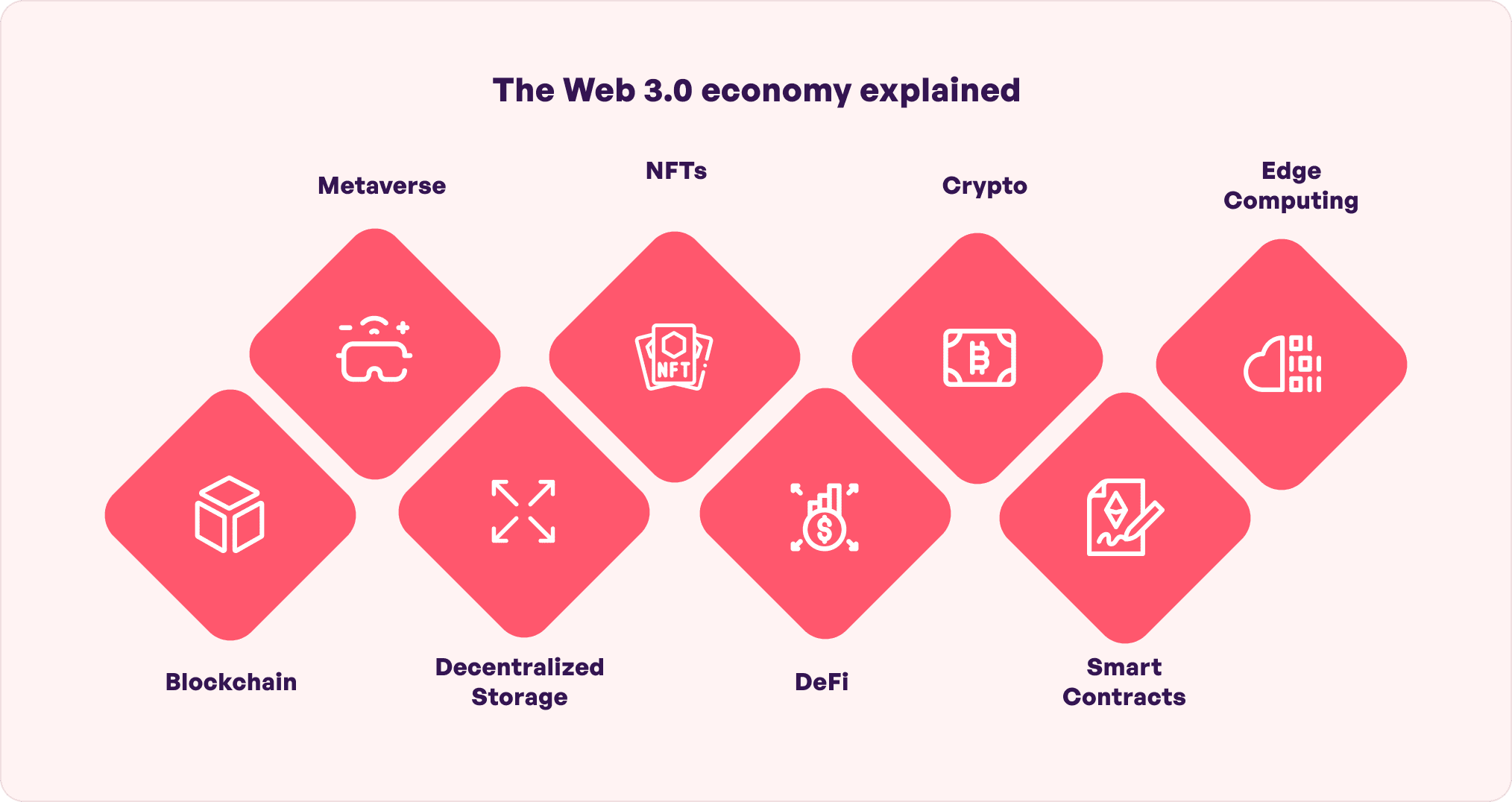
Altogether, Web 3.0 is expected to make the World Wide Web smarter and more desirable for users. In fact, it has already garnered substantial popularity. Here’s proof. The global market size value of Web 3.0 was $2.25 billion in 2023 and is poised to grow at 49.3% CAGR from 2024 to 2030. Key growth drivers of this growth chart are the criticality of data privacy and heightened demands for better internet technologies and customized experiences.
While the technology is in a nascent stage of development, it is worth knowing more about what is Web3, the previous phases, Web 3.0 solutions, and other related details. This will offer a perspective into how it can accelerate businesses. Read on to find out.
Table of contents
What are Web 1.0 and Web 2.0 technologies?
Web 1.0 was ‘read-only web’ and Web 2.0 is ‘participative social web’. Below is a basic idea of each one for a clearer understanding how the internet has matured.
Web 1.0
This was the first generation of the internet or its earliest form where web pages were static (hard-coded HTML pages) without user-generated contributions. This means, Web 1.0 was primarily informational with little or no interactivity. Wondering how that functioned? Well, content was displayed by different website owners and people like you and me simply visited the sites to fetch, read, and use that information.
The best way to understand this is to think of directory services or home pages like Yahoo. Other examples of Web 1.0 are LiveJournal and MySpace which did not have dynamic hyper-text markup languages and were more of a one-way communication tool.
Web 2.0
This was the second wave of the world wide web and is the present state of the internet which is dynamic, unlike the original version. This era is a paradigm shift in how we see the internet today marked by the rise of social media platforms, electronic bulletin boards, blogs, and online communities. Applications and websites are maximizing this user-generated content (like reviews) to measure and analyze their sales and service potentials.
In a nutshell, Web 2.0 is basically the 21st century internet characterized by interactivity and usability indicating a participatory culture. The result is improved collaboration and connectivity leading to refined user experience.
Now let’s see what is the buzz around Web 3.0
What is Web3 technology?
The seeds of Web 3.0 were planted back in 1991 which was basically when the first blockchain was launched by scientists. Today, Web3 has surfaced as the ultimate transformative force, the ‘meaningfully linked data’, which is all set to reshape the online world. It is powered by progressive technologies (AI, ML, and blockchain) and fostered by multiple innovations to create a ripe environment for business growth.
The definition of Web3 development is bringing blockchain technologies, tools like Ganache, Metamask, and Truffle, and the knowledge of cryptography, decentralized infrastructure, and coding together for a decentralized internet. This means, Web 3.0 will promote a democratic version of the internet prioritizing user ownership by removing control of the big data companies or intermediaries and placing it in the hands of the masses. So, everyone will have the power to control their information and so data, content, and transactions will not occur in tech centralized organizations.
This leads to cutting-edge potentials in terms of privacy and transparency in the digital landscape. Users no longer need permission from a central authority to post on the internet leading to censorship resistance and more freedom and privilege to create and express online without roadblocks.
Let’s take a recap of all three technologies once more before moving on:
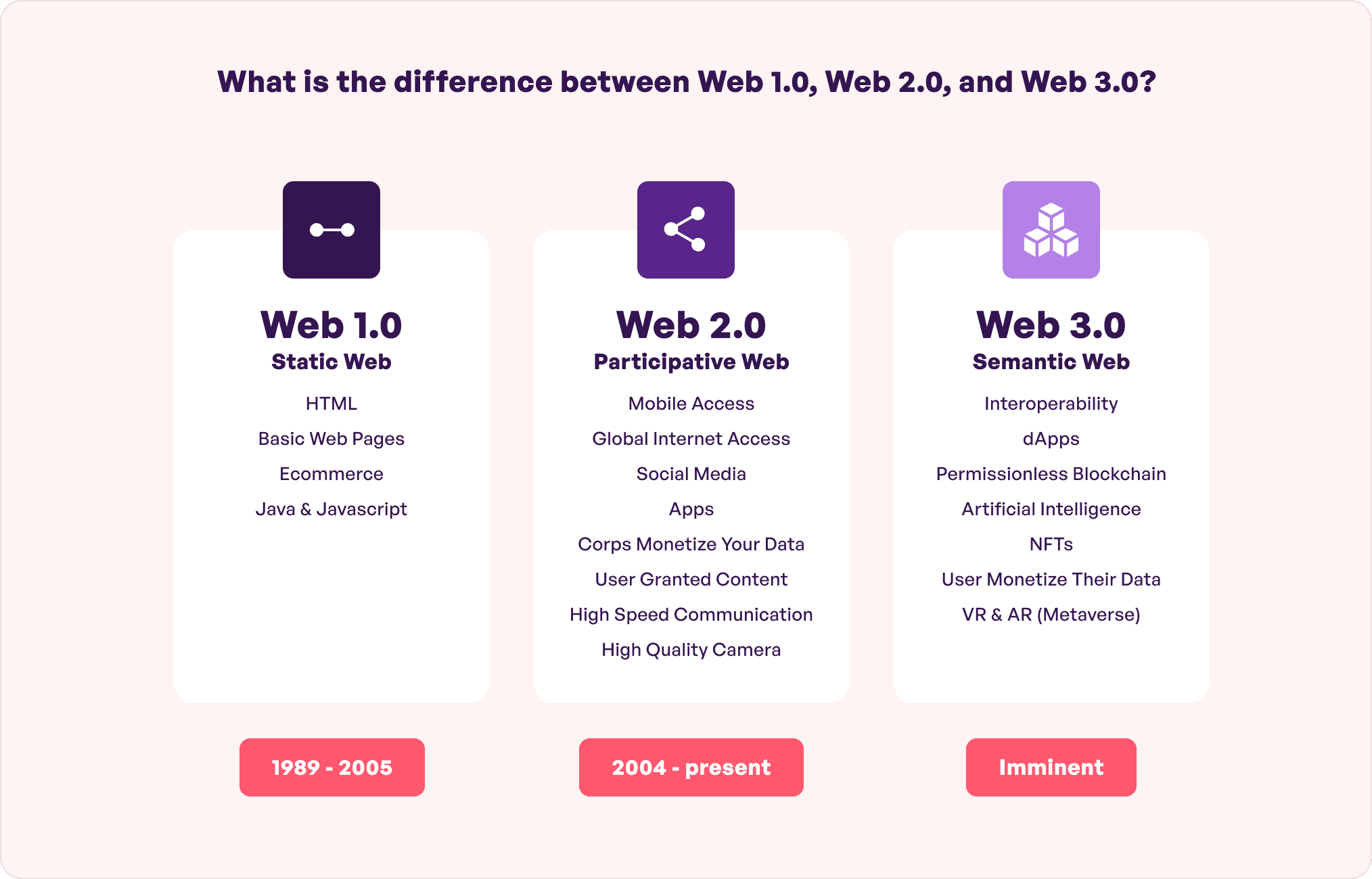
Web 3.0 development is best explained via its features. Delve deep!
What are the key features of Web3?
Web 3.0 developers use technologies that are based on Semantic Web concepts and NLP to ensure an intuitive interaction with users. So, the web version automatically becomes more adaptive and advanced than the previous two generations. Below are the features for clarity.
1. Ubiquity
Information being ubiquitous means it will be everywhere at the same time. Web 3.0 ensures exactly this with widespread availability and accessibility of content and services to everybody from any device. This openness and transparency gives a message that the digital space is not for just a few, but for all. As a result, the world wide web becomes quicker, more friendly, less restricted.
2. Decentralization
The concept of decentralization is the peer-to-peer connectivity that happens via nodes or servers and cuts off organizations from exercising control over data. It means, how users consume content or choose to do business is highly inclusive, resilient and less prone to censorship. This is because they will only have to give away information that is required to achieve what is required. The data will later be drawn from a distributed repository that does not leak someone’s online habits or history.
It is made possible since Web 3.0 will read the content on the internet using semantic technologies that simplify the sharing and safeguarding knowledge. Overall, decentralization is a core feature and the central design principle of Web 3.0 development.
3. Three dimensionality
Seamless integration of 3D elements into apps and websites are possible with Web 3.0 to create ultra-exciting virtual visual spectacles. This is characterized by depth and immersiveness which are not visible in 2D graphics, that is, the current internet. Experts say that Web 3.0 is likely to be the ‘natural home of 3D visualization.’ It would be made possible with realistic graphics and VR headsets to ensure users have a more natural experience with added realism in different levels of texture, color lightning, motions, and physics.
4. AI reliability
Artificial intelligence capabilities are thoroughly integrated in Web 3.0 which ensures digital interactions are quick, customized, and intelligent. There would be fewer chances of human manipulation of data ( for eg, biased product reviews) and more accurate information with highly trained intelligence models.
A branch of AI, namely generative AI, is expected to play a pivotal role in upgrading Web3 applications with user-friendly interfaces, analytical capabilities, and deep learning algorithms. A study has further confirmed that Web 3.0 and AI can address the gaps in each other to boost adoption and reduce the risks of derailing a business revenue and reputation.
5. Semantic web structure
In simple terms, Semantic web structure means interpreting emotions from facts. This capability helps in higher data transmission and better connectedness in Web 3.0. The standards of this data interpretation are set by the World Web Consortium (WWC). Two basic layers like URI and Unicode help enforce international characters that lead to classic object identification. These layers are further made up of XML schema, XML, XML namespace, RDF, and RDF Schema. Altogether, these ensure a structured representation of documents.
What are the Web3 use cases?
Web3 aims to ensure a user-centric internet experience and thrives on a myriad of real world applications. So, besides knowing what Web3 is, a clear concept of these applications and their impact on internet users will help in better understanding the technology.
Decentralized Finance or De-Fi
Users can hope to conduct real transactions without the involvement of banks. This method is known as De-Fi which is built on components like :
- blockchain technology
- layers of cryptocurrencies
- non-fungible tokens (NFTs)
- software that allows financial transactions.
The information is stored in digital wallets and is strictly protected against vulnerabilities like getting tracked. Given these extraordinary innovations, the decentralized finance market size is approximately at $46.61 billion in 2024 and is predicted to reach $78.47 billion by 2029. This entire ecosystem is unlike Web 2.0 where data is stored in centralized locations with third-parties acting as intermediaries.
Decentralized Autonomous Organizations or DAOs
Web3 will change how the internet is monetized and data is handled with the introduction of Decentralized Autonomous Organizations (DAOs) via dAPPs. These operate with the help of software programs (Smart Contracts) and consensus mechanisms where certain transactions are executed automatically upon meeting pre-determined terms and conditions (written in blockchain-based languages like Solidity). This phenomenon of going against the traditional hierarchy is possible since Web 3.0 has near-human capabilities and connectivity when processing information. DAOs using blockchains and tokens can be applicable in non-profits, open-source communities, and corporations.
Blockchain applications
The internet is a constant state of growing and changing. Businesses must understand how the recent Web 3.0 development has its foundation based on blockchain technology – a technology that has revolutionized multiple industries. Here are a few instances:
- Blockchain along with tokenization can be used to ensure quality standards in the supply chain are being met while minimizing the risks of fraud. There is an increase in privacy with decentralization along with better traceability when it comes to different stages of production or compliance. Altogether, this boosts operational efficiency of supply chain management.
- Blockchain-based systems with Web 3.0 along with AI ensure healthcare data is easily verifiable, not tampered and highly interoperable. It also takes medical data away from the siloed centralized model that has existed for ages. So, now patients can contribute to their health records online by uploading information from their devices. This makes sure patient privacy and efficient communication are in place.
So, every Web 3.0 platform is nothing short of a convergence of blockchain and AI with their set of architecture and rules ensuring a more personalized internet experience.
Cryptocurrency
The underlying technology of digital currencies like crypto, say Bitcoin or Ether, is blockchain which is what Web 3.0 is also built on. There is no centralized control and all transactions are only identified via a ‘cryptographically’ produced address. Crypto does not rely on a central government or institution and all identities and communications are encrypted. This kind of digital cash for making transactions has been built via Web3 to offer more choices to people when deciding how to trade.
IoT device support
With Web 3.0, IoT devices will have less exposure to security breaches which are otherwise quite common, like inefficient access controls and computational powers, corrupted chips insertion, and unpatched vulnerabilities. However, with the advent of Web 3, there is a radical transformation in safety with the help of Smart Contracts and decentralized web space. This was necessary to avoid malware risks and cloud breaches.
Non-Fungible Tokens or NFTs
NFTs are non-interchangeable and one-of-a-kind digital assets. The term ‘nonfungible’ means cannot be replicated, an essence that offers a new dimension in ownership and management of digital assets. Artists or business investors are able to interact and make profits in the decentralized marketplace even without the surveillance of superior entities. Owing to these benefits, NFT market revenue is poised to reach $2,378 billion in 2024.
Understand the technology better with an example.
NFTs have several use cases like loyalty programs and e-tickets that typically have unique identification codes and metadata on blockchain. It prevents them from getting copied and shared, and if at all that is done, the products are nothing like the original. This is quite an unconventional way of digital asset monetization. The best part is that NFTs can be seamlessly integrated in Web 3.0 due to their blockchain characteristics.
Below are the combined benefits of the above use-cases.
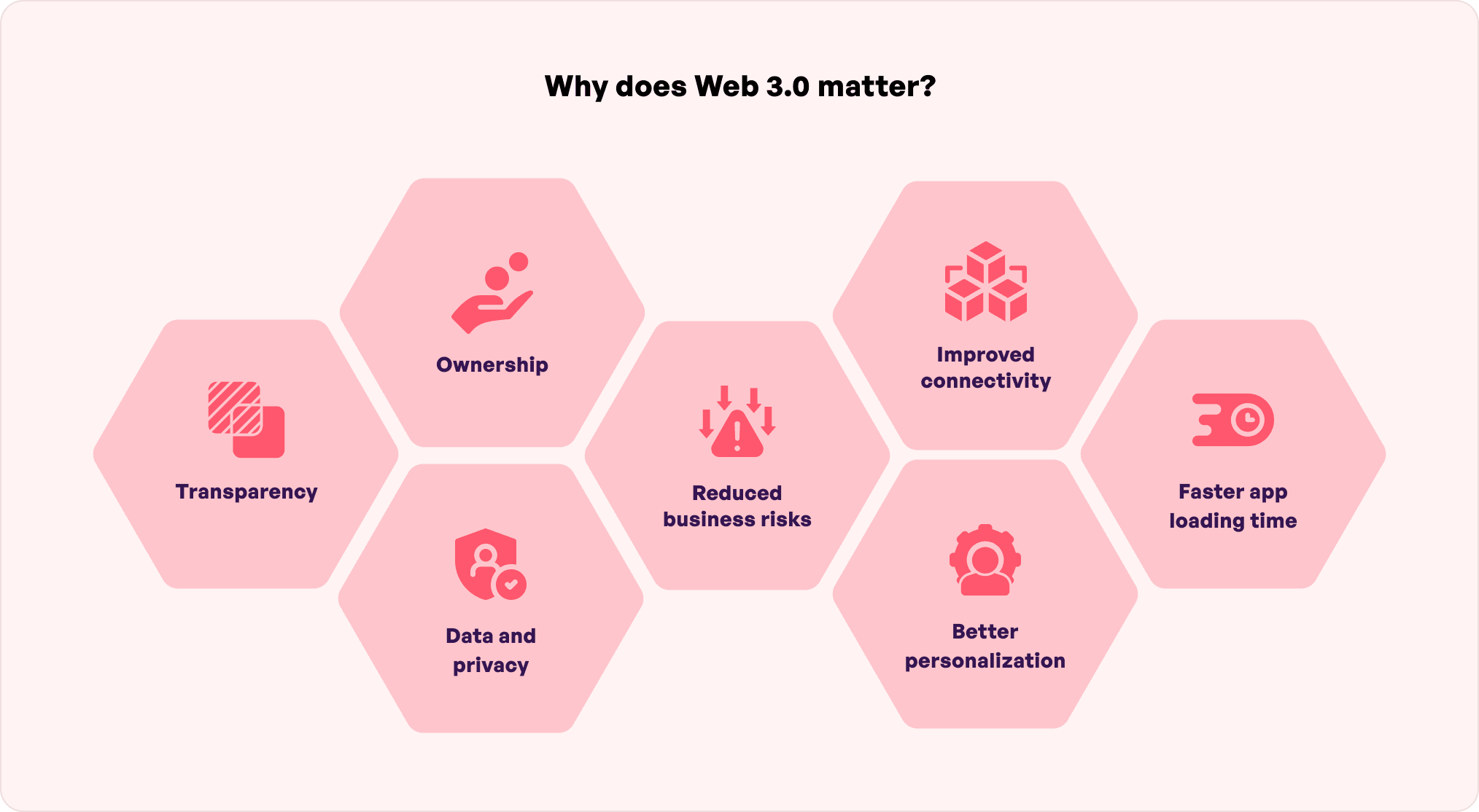
If you wish to leverage the potentials of this pioneering technology, consider connecting with us at Simublade. We are based out of Texas and offer exceptional Web 3.0 development services powered by next-gen technologies like AI, blockchain, AR/VR, and IoT. Our developers focus on innovation along with a robust tech-stack to build fail-proof solutions ensuring complete democratization of data.
Moving on from web3 use cases, let us understand how metaverse, the 3D virtual world and the parallel internet, is relevant to Web 3.0.
Web3 vs Metaverse: What should businesses know?
The metaverse and Web 3.0 are interdependent and are likely to alter how we do business in the near future. So basically, they are powerful winds of change that are all set to offer mindblowing online interactions to end-users.
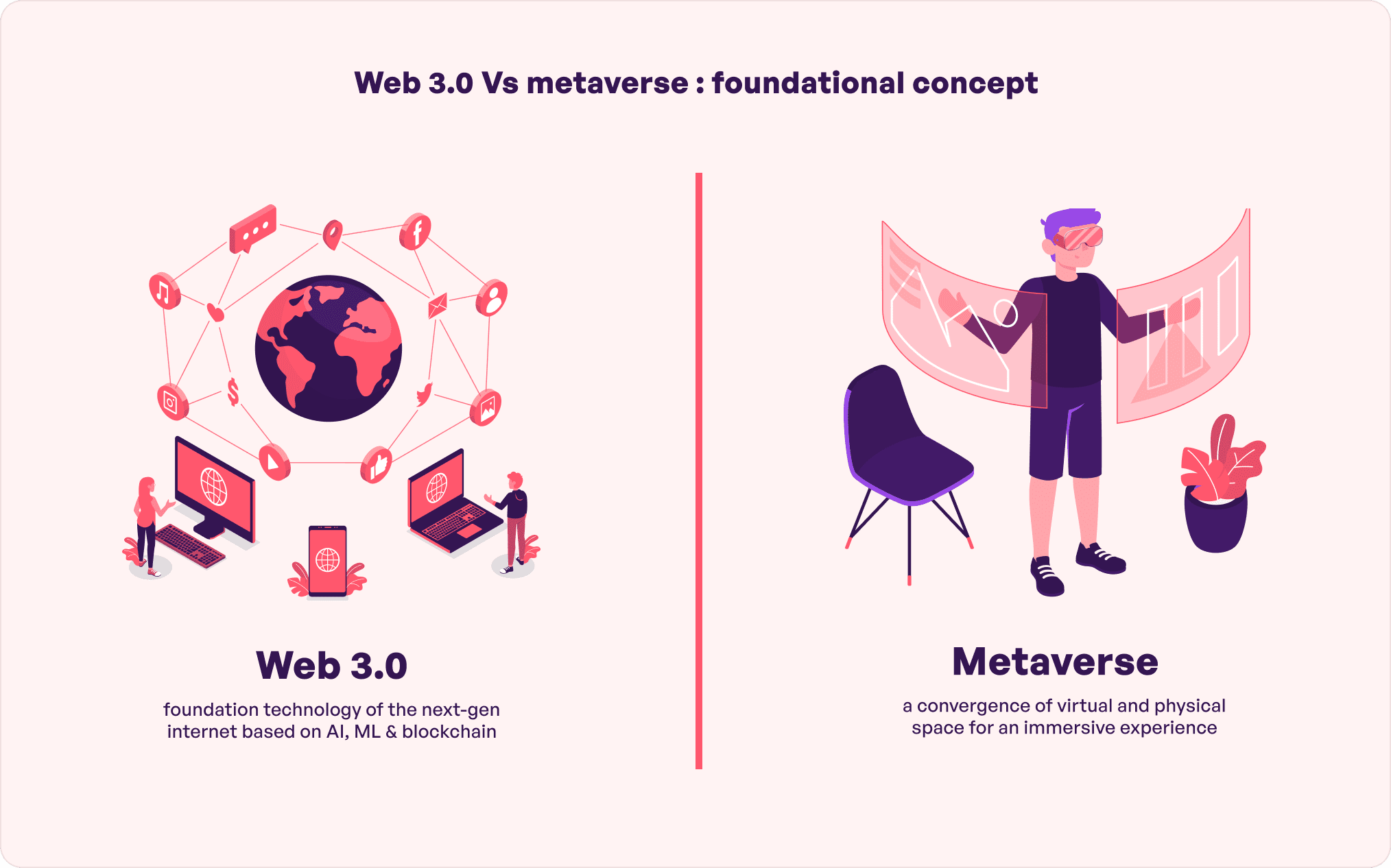
However, both these technologies have inherent differences. Have a look:
- Metaverse is primarily meant for social interactions, training sessions, and gaming by taking privacy and addiction into consideration. Web3 is focused on creating a decentralized and democratic internet space.
- Metaverse is still a rapidly developing and progressing field. Its core technologies are laying a groundwork for more immersive interactions. On the other hand, Web3 is already live, applicable across the internet, and will rise as the next era of the online world.
- The core technologies of Metaverse are AR/VR and XR. Web 3.0 is an individually owned network which is highly controlled by AI and blockchain.
- Metaverse transforms a tangible environment into a magical digital space thus transcending the boundaries of reality. Web3 is a peer-to-peer autonomy of the internet without superior controls and monitoring. .
- The business applications of metaverse are e-learning, e-commerce, hardware technology, software technology, haptic wearables, and the healthcare sector. Web3 is popular in Fintech, communications, logistics, real estate, and retail industries.
However, despite the Web3 vs Metaverse battle, there is a particular point where both the technologies overlap which is undoubtedly the best of both worlds. For instance, both advocate for decentralization. Further, metaverse allows users to own digital assets like lands which is the central aspect of Web3. Further, both blockchain and AI are critical parts of both and the metaverse would not ever exist without Web3.
We at Simublade are tech-wizards when it comes to Web 3.0 and metaverse. Businesses across the USA trust us with NFT marketplaces, self-sovereign identification, Web3 wallets, Web3 gaming and consulting, and avatars. From conceptualization and orchestration to development and testing, we come second to none. So, consider getting an idea of what we do and who we are for and then come discuss your project with our Web 3.0 developers.
What tech-stacks are used in Web 3.0 development?
Top professionals like us use blockchain, development environment, layers2s sidechains, indexing and querying, off-chain data protocols, identity, and Oracles. This is combined with several languages and frameworks along with powerful technical expertise to build solutions for multiple sectors like sports, real estate, music, and arts.
Conclusion
Web 3.0 was once the future of the internet and now it is happening! The technology has matchless potential to reinvent interaction, communication, and entertainment. This is reflected in trends in Web 3.0 development cross-chain compatibility and IoT integration in decentralized networks. These are likely to make significant impacts on tech giants like Google and Apple that still control data from source till the end.
Get in touch with capable developers to explore what exciting possibilities the technology offers. While the adoption of Web3 is still slow, you can leverage its potential in your interest to upgrade your business operations and stay ahead of your competitors.
FAQs
Q. How does Web3 differ from the Metaverse?
Ans. Metaverse creates a parallel internet universe with AR/VR where nothing is tangible yet users can experience the depth of reality. The definition of Web3 development on the other hand strives to build a decentralized internet prioritizing transparency, privacy, and ownership.
Q. What are some top examples of Web3 Use Cases?
Ans. Top examples of Web3 use cases include supply chain transparency, DeFi, crypto, NFTs, and dApps. The technology is further quite popular in the healthcare, retail, e-commerce, finance, and real estate industries.
Q. What is the difference between Web3 and Web2 security?
Ans. Web3 uses Smart Contracts and eliminates intermediaries to prevent breaches and ensure better security. Web 2.0 uses encryption and regular audits to keep data secure. Get in touch with Simublade’s expert developers to get started with your Web 3 solution.


